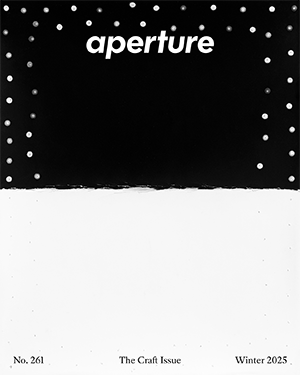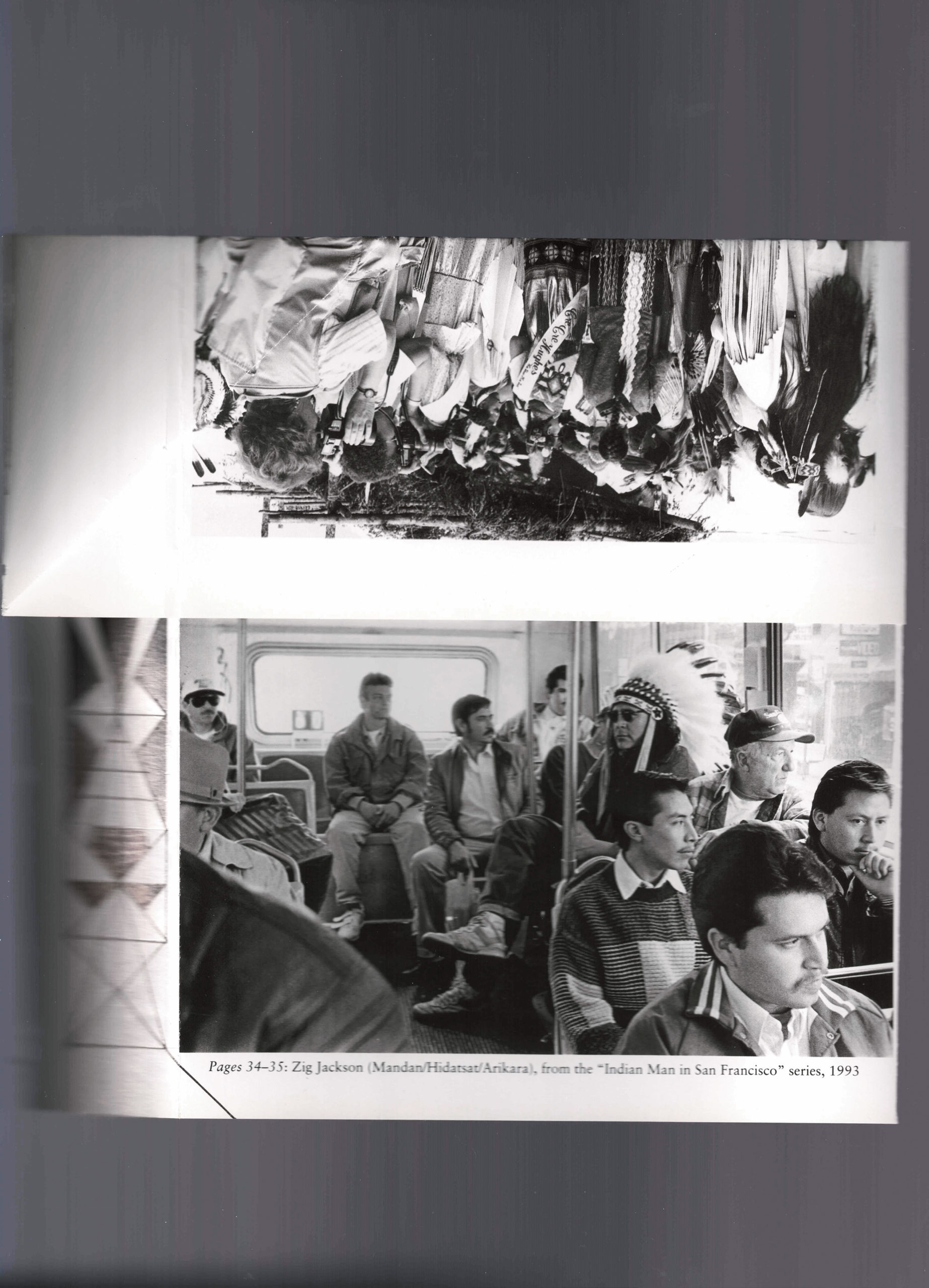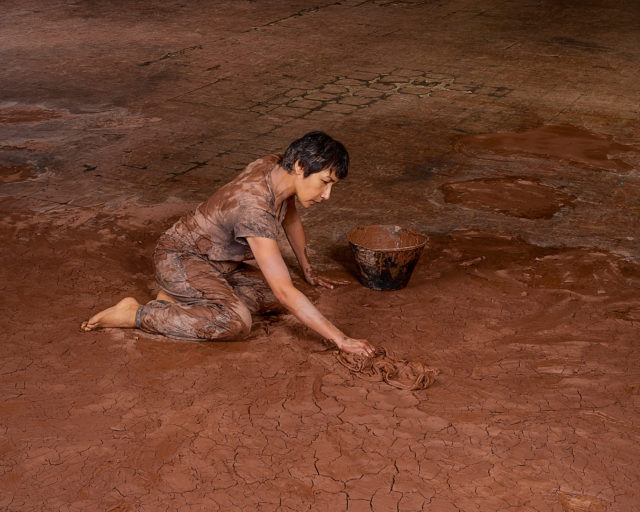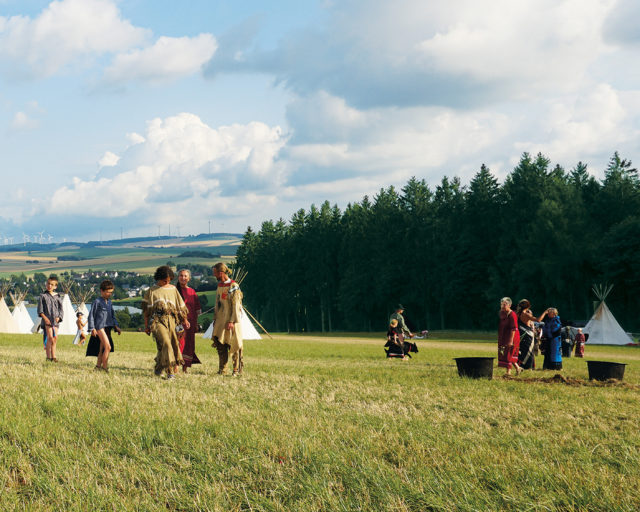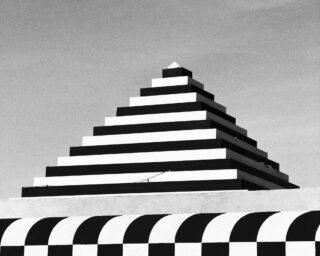Duane Linklater, from the series Other Workers Will Follow, 2020, for Aperture
When Wendy Red Star asked Duane Linklater to contribute to this issue, he remembered Aperture 139, “Strong Hearts: Native American Visions and Voices,” from 1995. He cannot recollect how he acquired that issue, but it was among his first exposures to contemporary art by Indigenous people and has remained in his mind these many years. When Linklater received a copy of that same edition earlier this year, he was happy to recall his original interaction with the magazine and consider the continued relevance of the works represented within. He reread Paul Chaat Smith’s sagacious essay with new understanding, lingered on the sensitivity of James Luna’s photo-text work about his community, and was reinvigorated by Zig Jackson’s stunning self-portraiture in San Francisco.
Taking cues from the conceptual work of Sol LeWitt and Charles Gaines, who explored the grid as a system to develop ideas and test boundaries, Linklater began his own line work atop scanned pages from that earlier Aperture issue to establish a space of experimentation and improvisation. Ruminating on several pages of particular resonance, he began to draw, write, fold, and scan, his lines a continuation of the formal ways of working long used by Indigenous artisans to map out beadwork and quillwork while delimiting the scale and pace of his own practice.

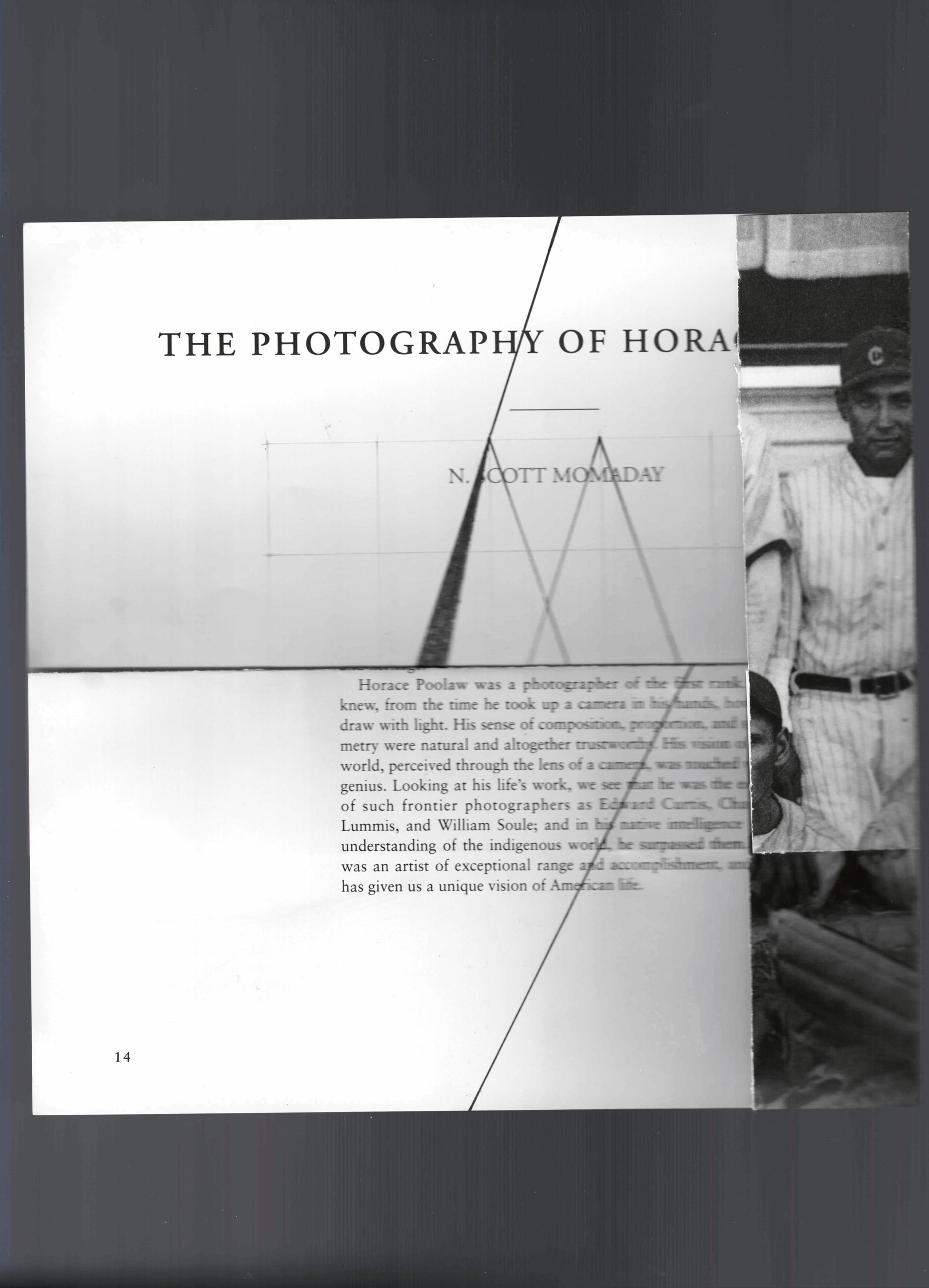
Linklater’s contribution to this issue, Other Workers Will Follow (2020), reminds me of conversations we have had over the past several years about how art and artists are read by others. I was specifically reminded of what poet and philosopher Édouard Glissant called our “right to opacity”—to retain parts of ourselves away from others and maintain our complexity, ritual, and sanity. That people should be able to live in peace and respect what they cannot understand and know about one another. Linklater spent the majority of the last year developing can the circle be unbroken (2019), which was included in SOFT POWER, an exhibition I organized at the San Francisco Museum of Modern Art. In this series, painter’s linen is cut, printed, sewn, dyed, and marked to create five soft sculptures in the form of tipi covers, nearly seven meters long. There were many ideas, struggles, memories, and knowledges put into these objects before they arrived in the galleries, but it was within the museum that Linklater enacted his most physical and lasting impact on the works as he gave them their final forms: draping one vertically, rubbing another with sumac pollen, scrawling on others with chunks of homemade charcoal. But it was the most modest gesture—folding one of these enormous vessels into a portable size—that is echoed on the following pages. The works’ potential mobility emphasizes the Indigenous technology of the tipi, while the folds of this flat sculpture refuse to reveal its elaborate surface; it obscures part of itself from view to demand autonomy while maintaining potential.
Coming across Horace Poolaw’s image Carnegie Indians Baseball Team (ca. 1933) again in the “Strong Hearts” issue, Linklater remembered that one of those players always reminded him of his father. But even as he was drawn to address this image, he acknowledged a tension in the appropriation and rephotography of images in his art. While the original works remain significant in their own articulation, Linklater sought a way for these gestures of the past to live among us again. As he marked the pages, he folded, collapsed, and covered much of his own drawing to hide his decisions and leave us only with possibility. Other Workers Will Follow revisits works published a quarter century ago, to feed us forward. They are a way for Linklater to point at other Indigenous people with recognition and intent in a way that representations by others do not afford—to look, greet, and think about each other.
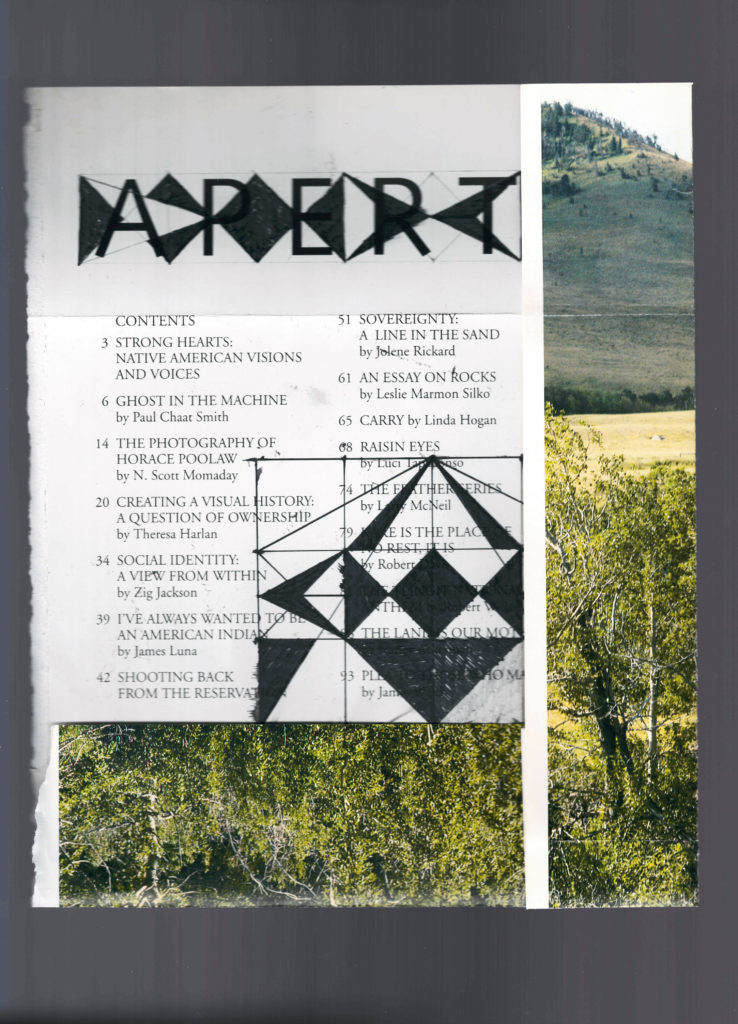
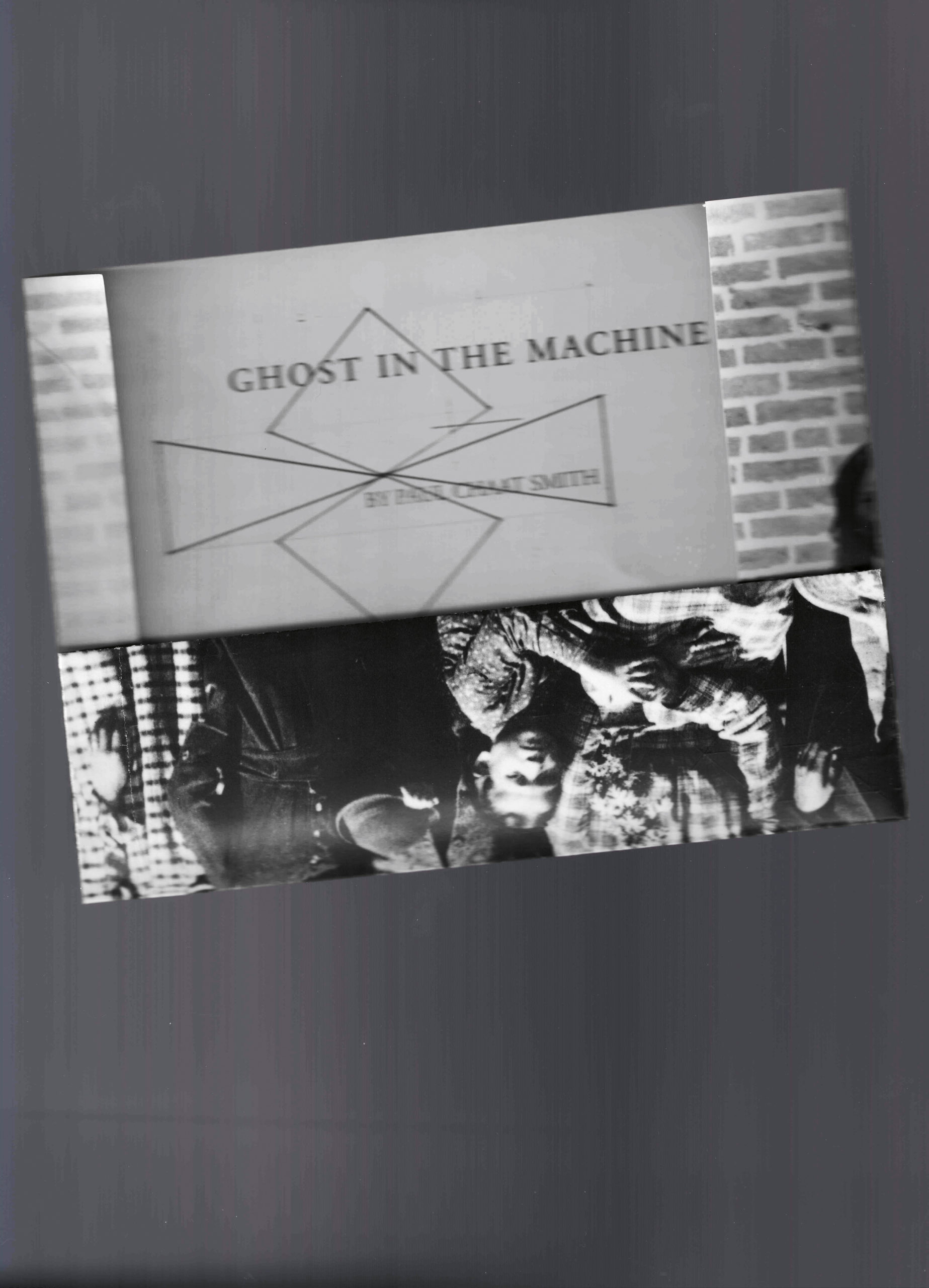

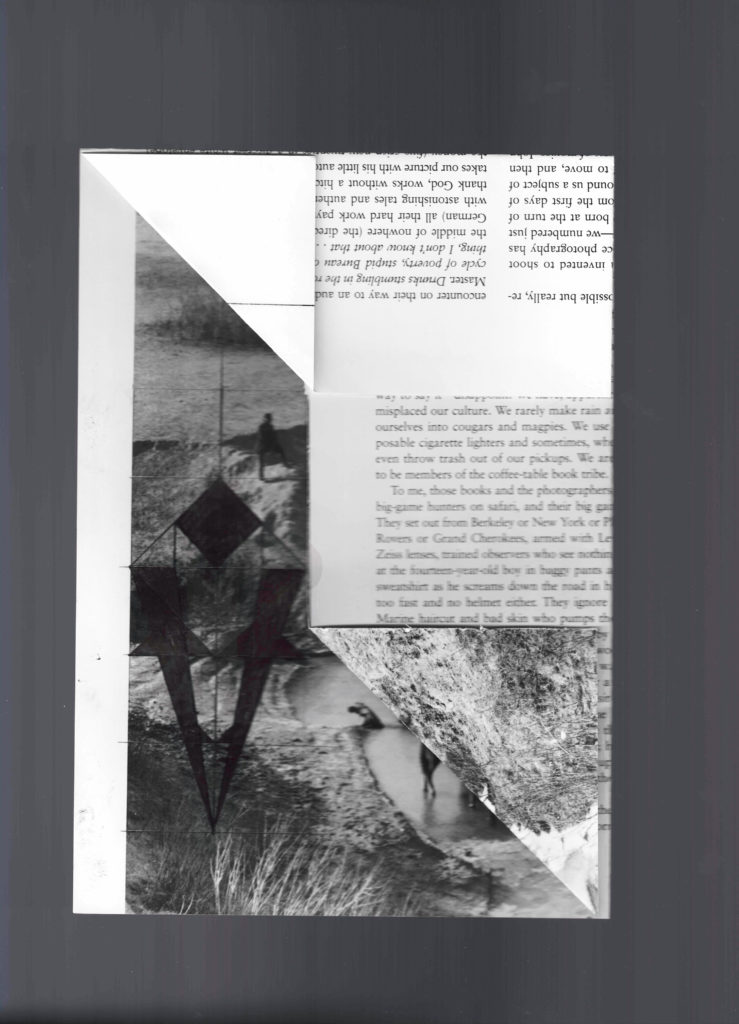
Courtesy the artist and Catriona Jeffries, Vancouver
This piece originally appeared in Aperture, issue 240, “Native America,” under the title “Other Workers Will Follow.”
